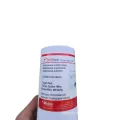Description
The TRILINE+ CSCA-1 blisterpack (1x5) contains a blend of 600 predatory mites which includes 100 Amblyseius californicus, 200 Amblyseius cucumeris, 200 Amblyseius swirskii and 100 Amblyseius andersoni. This product, developed as a biological control product, is designed to be used in integrated pest management (IPM) and features a blister pack system for the ease of mobilization, intended for crops prone to thrips, spider mites and whiteflies. Additionally, this multipack format allows for greater releasing of various predators to ensure long-lasting growth suppression and boost growth.
This product ensures resilient biological pest control through versatile predatory mite usage. The inclusion of four species allows for TRILINE+ CSCA-1 blisterpack (1x5) to be adapted to a greater range of growing conditions and climates.
Amblyseius californicus is a special two-spotted spider mite predator and is resilient under harsh climatic conditions. We also have nổi shrimp Amblyseius cucumeris known for their specialization in the control of larvae of thrips, notably Frankliniella occidentalis. Furthermore, different Amblyseius buildups serve as all-purpose miticultural and trematode-strike assaulters along with whitefly and shrimps aiding them from high humid warm temperature/high humid areas as Amblyseius swirskii while Amblyseius andersoni predominate in moderate climate accommodating generalists against spider and other cutworms.
The TRILINE+ CSCA-1 blisterpack (1x5) combines these four synery species to create multi-predator grades.
They operate as a cohesive ecological unit that affects various styles of crops, including those in greenhouses, shade houses, and indoors.
How It Functions
Professional pest control techniques
The TRILINE+ CSCA-1 blisterpack (1x5) implements a technique called controlled and uniform dispersal of punisher predatory mites. This allows:
- Release of predatory mites to take place over several days.
- Obstruction-free emergence of mites from the blisterpack without any disturbance to the plants.
- Direct application of the blisterpack to the foliage which allows for targeted establishment.
- This mechanism of control increases work productivity in growing crops and improves mobility of predators in the crops.
- Complete Instructions of Use Special Instructions for Application
- Working with the blisterpacks has risks, and as such, exact guidelines need to be followed:
- Put on early stages of pest infestation or as a preventive stand.
- Can be put directly on top of the plant's canopy where the pests roam the most.
- Good for plants like pepper, cucumber, tomato, berry, and even some flowers.
While it is best to operate under 68-86 degrees F, humidity can vary from moderate to high, A. californicus, and A. andersoni can thrive in arid or unstable conditions.
Versatility
Pest free and residue safe
The TRILINE+ CSCA-1 Blister pack (1x5) is sustainable and good for the environment because:
- Doesn't contain toxic chemicals or additional substances
- Beneficial bugs and even pollinators can freely do their job without being harmed.
- Helps develop and maintain sustainable crop protection approaches in organic and conventional agriculture.
By applying this biological method, growers can curb the use of chemical herbicides and pesticides, improving soil and crop health in the long run.
Crop Suitability
Versatile Across Cropping Systems
It can be utilized in several environments, including:
- Greenhouses and shadehouses.
- Artificially lit Indoor farms.
- Climatic open field horticulture.
This innovation is favored by specialists who require little care multi-pest control systems because of its flexibility.
Final Words
Tips for Success
- Best results with TRILINE+ CSCA-1 blisterpack (1x5):
- Stored or used under 42–50°F.
- Applied within 48 hours if not used immediately.
- Must be applied early in the crop cycle for preventative control.
- Pesticides should not be applied before or during use for mite viability.
- Adjust based on infestation and crop cycle.
- Reinforcement depending on infestation pressure and crop cycle.
Reviews
No reviews found




